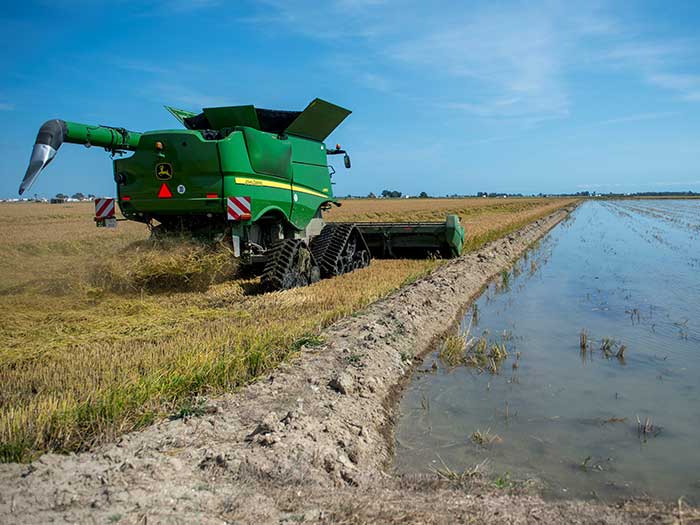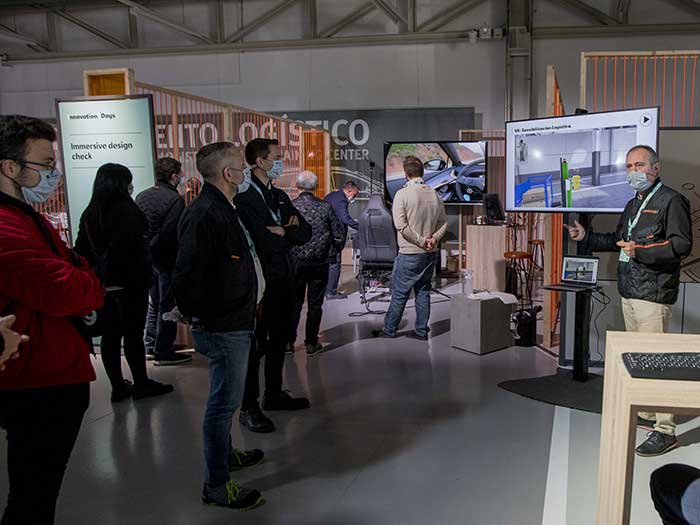Rice husks to reduce plastic materials: the SEAT project
Rice is the most popular food on the planet, and leftover husks from its production can also be used to make car parts. SEAT is researching the use of Oryzite as a substitute for plastic products, promoting the circular economy and reducing its CO2 emissions.
Making mobility more sustainable also means conducting research on alternative substances and raw materials that can be introduced into the automotive supply chain for the benefit of the environment. Take rice husks, for example, which derive from processing rice and are usually disposed of. They represent 20% of the total rice harvest – 140 tonnes out of the 700 tonnes harvested worldwide every year.
The Montsià Rice Chamber has worked on an alternative, developing a process that turns the husk, which previously would have been burned, into Oryzite, a material that can be mixed with other heat-stable thermoplastic compounds and moulded.
Rice husks

SEAT is testing Oryzite on some trim elements in the new Leon. “At SEAT we’re always working on finding new materials to improve our products, and in this sense, rice husks enable us to work on reducing plastics and petroleum-based materials” says Joan Colet, interior trim development engineer at SEAT.
The tests currently consist of modelling some parts of the car – such as the rear hatch, the double load floor of the boot or the ceiling headliner – with rice husks mixed with polyurethanes and polypropylenes. The results are identical to those made with conventional technology, but weigh much less. “The parts are lighter, which means that we reduce the weight of the car, thus reducing consumption and emissions,” explains Colet. “We’re also using a renewable material, promoting the circular economy and making a greener product.”
Guaranteed quality

Trim elements are currently being analysed to find out how much husk can be used while ensuring that technical and quality requirements are met 100%. For example, the double-deck cargo area of the luggage compartment undergoes load tests in which it must withstand up to 100 kilos of weight concentrated in one spot to check its rigidity and strength.
Thermal tests are also carried out in the climatic chamber to analyse its resistance to heat, cold and humidity. “The technical and quality requirements of a new material must be the same as those we have today. As long as the prototypes we’re making meet these requirements, we’ll be closer to introducing them as standard,” Colet explains.
SEAT Innovation Day

Oryzite was one of a number of innovative projects unveiled during the second edition of SEAT Innovation Day – an event focused on identifying and encouraging the spirit of innovation among the company’s employees. A hybrid format was used for the event, which combined online and in-person sessions where workers were able to learn about projects that have emerged over the last year and interact with their creators. Topics ranged from artificial intelligence and innovation in times of crisis to corporate challenges related to new mobility options, the connected car or the customer experience.
“Innovation is a catalyst for SEAT in two ways: on the one hand, it enables us to evolve toward processes in the short term and to implement more efficient ways of working which generate value and have a direct impact on company results. On the other hand, it enables us to create new products and services that can become differentiating factors for the SEAT business,” says Xavier Ros, SEAT Vice-president for Human Resources.
Ku-Fizz
SEAT Innovation Day also saw the unveiling of Ku-Fizz, a physical foam filling technology that reduces the weight of plastic parts, improving current technologies. It consists of injecting gas between the layers of some of the vehicle’s parts, which then turns into an inner structure of foam.
In this way, less plastic and injection material is used, lightening the weight of these parts and at the same time reducing the CO2 emissions, production times and costs.
Caring for the environment
These, and other innovations, are a practical expression of SEAT’s commitment to caring for the environment to meet the goals set out in the Paris Agreement. Within the framework of its sustainability strategy and its corporate mission MOVEtoZERØ, SEAT aims to minimise the environmental impact of all products and mobility solutions throughout their entire life cycle.
“Research is the way to a sustainable future. Only by investing in innovation will we be able to promote new projects and materials that reduce the use of plastics and contribute to the global care of the environment,” says Stefan Ilijevic, Head of Innovation at SEAT. The ultimate aim of SEAT, as for the entire Volkswagen Group, is to achieve a zero carbon footprint, thereby becoming carbon neutral, by 2050.
Source: SEAT S.A.
